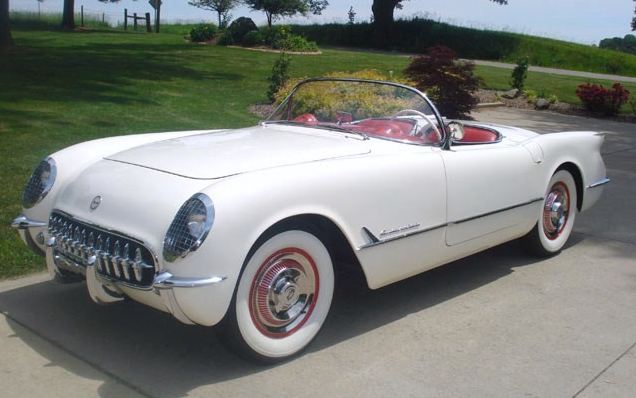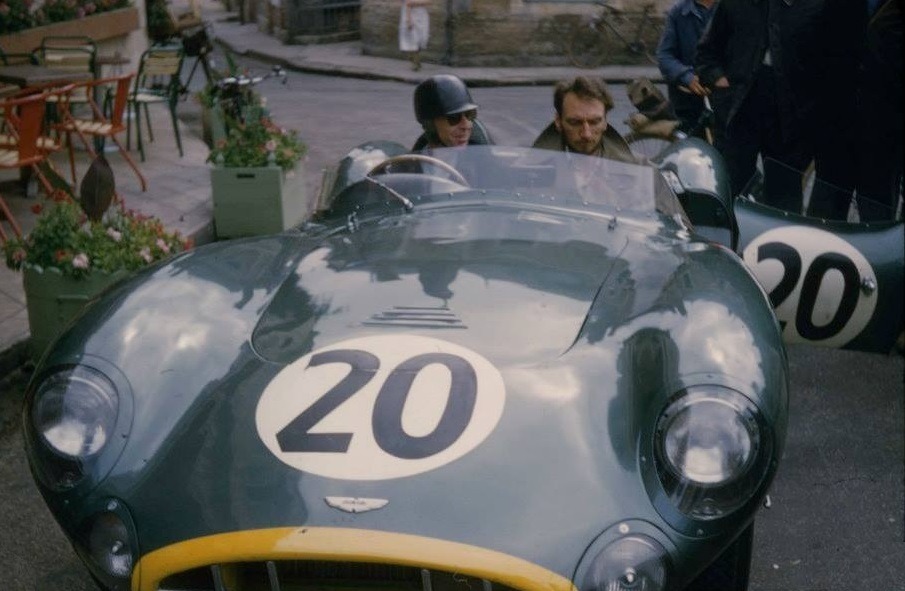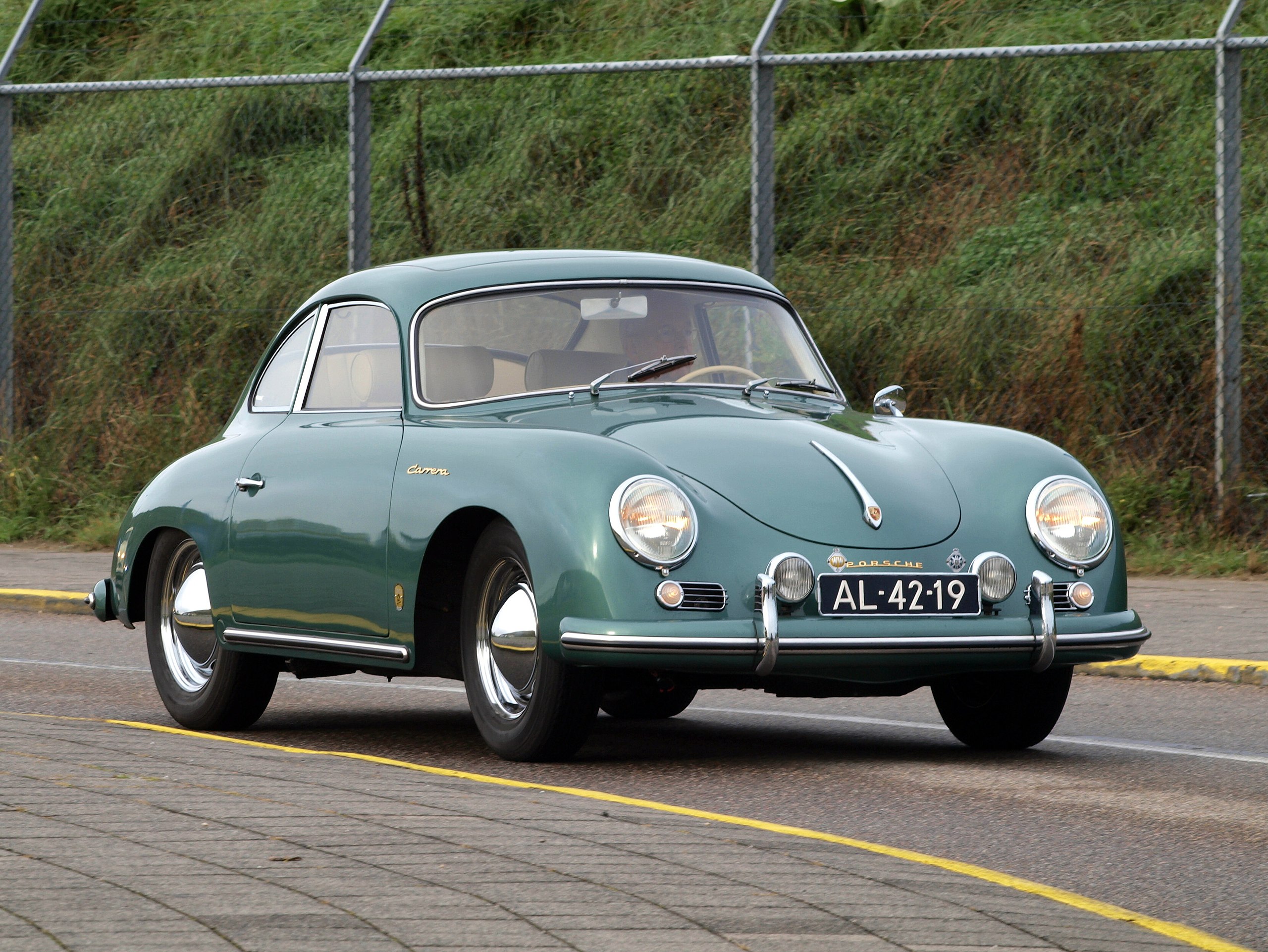The 1950s was the golden era for racing cars and competitive racing. Due to World War II, most countries had cars on their roads that preexisted before the war and were in very bad condition. There were restrictions on the production and manufacturing of new automobiles in many countries. In 1950, several companies all over the world started focusing on rebuilding and renovating the factories to expand and strengthen the highway systems.
During this era, new technologies related to aircraft and car engines were developed. These new technologies allowed cars and aircraft to have better speed, handling, and durability. These improvements in technologies had an expanded effect on racing cars too. The capability of racing cars had improved to an undeniable level, which resulted in the manufacturing of the most famous racing cars of the 1950s. Some of these cars are the best ones made from the decade.
1. The Jaguar C Type
Jaguar is one of the legendary and most famous cars of the 1950s. In 1950 this company introduced three of its C-type racing cars that raced at the Le Mans the same year. During this time, the C types were considered to be produced for racing only, and it was possible with a lighter weight and better thermodynamics.
Jaguar XK120C 1951
The Jaguar XK 120C 1951 was the first car of this company that won its first race at the classic French competition and came first at the 24 Hours of Le Mans. This car was designed explicitly like its ancestor car, i.e., The XK 120, and had many of the stock parts of XK 120, but the new thing about the latest XK 120C was that it had:
- An aerodynamic body that was freshly designed.
- Space frame chassis.
- The brand new suspensions.
- Twin-cam 3.5 liters, six-cylinder, inline engine tuned to 204 horsepower.
The C in the car’s name comes from the word competition. Themodel was also famous because of the Dunlop aircraft disk brakes that were used in it. These brakes had the capability to allow the car to brake straight from the speed of 150mph or close.
In Monaco, at Bonham’s auction, a rare Jaguar C type POV 114 was sold for $7,540,541.
Interesting Facts:
- The Jaguar C-Type (also known as the Jaguar XK120-C) was introduced in 1951.
- It won the Le Mans 24-hour race twice, in 1951 and 1953.
- The C-Type was notable for being the first car to adopt disc brakes in international racing.
- It used the running gear of the contemporary XK120 in a lightweight tubular frame and aerodynamic aluminum body.
- Only 53 C-Types were built, making it a rare collector’s item today.
2. Chevy Corvette
Today’s American legend, the Chevy Corvette, debuted in the year 1953. The company manufactured only 300 Chevy Corvette in the first year. This car became the crowd favorite when first introduced at the GM Motorama in 1953. It was the first racing car in America to have a double seat. Its body was made from fiberglass. By 1956, the Chevy Corvette became one of the most famous racing cars because of its V8 small block engine.
Throughout the 1950s, the company introduced a variety of cars in the Corvette theme, this variation includes:
- Chevrolet Corvette Convertible Coupe (1954)
- Chevrolet Corvette Roadster (1955)
- Chevrolet Corvette (1956)
- Chevrolet Corvette Roadster (1957)
- Chevrolet Corvette SS (1957)
- Chevrolet Corvette (1958)
- Chevrolet Corvette Sting Ray (1959)
The value of the first 300 Chevy Corvettes in 2013 was around $300,000. These Chevy Corvettes had automated transmission with dual speeds and a 150hp, 6-cylinder engine with white exteriors and red interiors.
(featured image)
Interesting Facts:
- The Chevrolet Corvette was first introduced in 1953 as America’s first mass-produced sports car.
- The first generation Corvette was known for its fiberglass body, which was innovative at the time.
- In 1955, the Corvette received its first V8 engine, significantly boosting its performance.
- The 1957 Corvette introduced fuel injection, a rarity for the time, making it one of the fastest cars on the road.
- The Corvette quickly became a symbol of American performance and style in the 1950s.
3. Aston Martin DBR1
The famous Aston Martin DBR1 was manufactured for one sole reason, and that was to win the 24 Hours of Le Mans. The company manufactured only five of these Aston Martins, and they were specially designed by Aston’s chief designer Ted Cutting.
This car had:
- A 3.0-liter V-12 engine.
- Wire spoke wheels.
- Ultra-thin gauge alloy bodywork.
- A draped spaceframe chassis.
- Organically shaped front-fender vents.
- Small scoops for cooling down the rear brakes.
In 2017, at a Monterey auction, an Aston Martin DBR1 was sold for $22,550,000. Undoubtedly, it was one of the best racing cars of the 1950s.
Interesting Facts:
- The Aston Martin DBR1 was first introduced in 1956.
- It achieved its most significant victory by winning the 1959 24 Hours of Le Mans.
- The DBR1 was powered by a 3.0-liter straight-six engine, producing around 250 horsepower.
- Only five DBR1s were built, making it one of the rarest and most desirable Aston Martins.
- The car’s design focused heavily on weight reduction, leading to its success in endurance racing.
4. Porsche 356 A
In the 1950s, Porsche hit their stride after introducing its first car with full racing abilities named Porsche 356 A. The first Porsche 356 A was introduced in 1955, and it had a light body with a flat-four 1.3-liter engine having 44 brake horsepower.
The main difference between the original 356 and 356 A was the curved panoramic windscreen. The horn grille had the front indicators always integrated into it, and its taillights were of tear-drop shape. The Porsche 356 proved to be one of the most popular racing cars in its time with all of its amazing features.
Interesting Facts:
- Introduced in 1955, the Porsche 356 A was an evolution of the original 356 model.
- It featured a more curved windshield and offered more powerful engines as compared to its predecessor.
- The 356 A was available in a variety of body styles, including coupe, convertible, and the unique Speedster.
- It was Porsche’s first major success in sports car production, solidifying the brand’s reputation.
- The car was known for its exceptional build quality and handling capabilities.
5. Ford Thunderbird
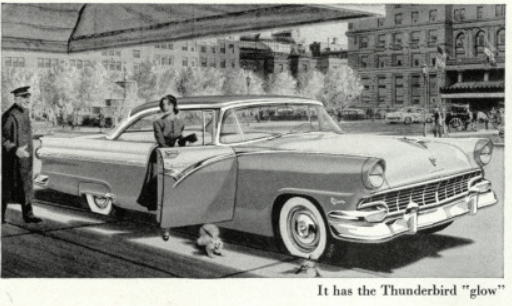
In the 1950s, the USA joined the racing car fray by introducing the Ford Thunderbird. This car was designed as an upmarket rival of the Corvette 1953. The earlier models of this car came with a lump upfront of a 4.8-liter engine. Its speed was about 110mph. The car got extraordinary attention in the initial days of its release; about 3500 orders were placed for the car in the first ten days. The first generation of Ford Thunderbird was a double seat convertible.
The Thunderbird came with a convertible fabric top and a removable fiberglass top. The 1955 Ford Thunderbird had a292-cubic-inch OHV 292 Y-block V8 engine. There was a dramatic shift in the power, styling, and market position in the first decade of Thunderbird’s production.
Interesting Facts:
- The Ford Thunderbird was introduced in 1955 as a sporty two-seat convertible.
- Unlike the Chevrolet Corvette, the Thunderbird was marketed as a personal luxury car, with a greater emphasis on comfort and features.
- The first generation Thunderbird was equipped with a V8 engine and offered both manual and automatic transmissions.
- In 1958, the Thunderbird was redesigned as a four-seater, which significantly increased its sales.
- The original two-seat Thunderbird models are now considered classic American cars from the 1950s.
6. Alfa Romeo Disco Volante
The Disco Volantein this car’s name means “flying saucer” in Italian. Disco Volante was earlier introduced just as an experimental series of a sports car, but the hype it created was outstanding. These cars were manufactured in a very limited amount, but their early aerodynamic design is recognized as a triumph to date.
These lightweight cars were initially powered by a 2-liter putting 156 brake horsepower through its rear wheels. Alfa Romeo Disco Volante had a 227bhp 3.5-liter straight-six engine that allowed this little car to approach the speed of 150 miles an hour.
Interesting Facts:
- The name “Disco Volante” translates to “Flying Saucer” in Italian, inspired by its unique rounded shape.
- Introduced in 1952, it was a series of experimental sports racing cars.
- The body was designed by Carrozzeria Touring and was noted for its aerodynamic design.
- Despite its striking appearance, the Disco Volante had limited racing success.
- Only a few were ever made, making it a rare piece of Alfa Romeo’s history.
7. Mercedes-Benz 300SL Gullwing
A discussion about the best racing cars of the 1950s can never end without mentioning this beauty named Gullwing. This car, when introduced in the market, got extra attention. The Gullwing was available in both variants – coupe or convertible. Around 1,400 coupes and 1,858 convertibles were sold, and a large part of this was sold in America.
These cars had a straight-six 3-liter 170bhp engine with advanced extraordinary aerodynamics. The space frame of these cars was completely made of aluminum. This frame design made the iconic doors of Mercedes –Benz a necessity, and these doors became the design feature of Mercedes too. It should be noted that in the time when most of the companies were naming their cars after the names of birds, Mercedes built the Mercedes-Benz 300 SL Gullwing directly from the inspiration they got from the avian world.
Interesting Facts:
- Introduced in 1954, the 300SL was the first iteration of the SL-Class grand tourer.
- It was famous for its distinctive gullwing doors and was the fastest production car of its day.
- The 300SL was the first car to feature direct fuel injection, a major technological advancement.
- It had a 3.0-liter inline-six engine, producing approximately 215 horsepower.
- Originally a racing car, the 300SL was adapted for road use and became highly successful as a sports car.
8. Mercedes-Benz W196
The Mercedes-Benz W196 was a Formula One auto racing car produced by Mercedes-Benz for the 1954 and 1955 F1 seasons. What set this car apart was its introduction of fuel injection and desmodromic valves. Piloted by the legendary Juan Manuel Fangio, the W196 dominated the competition, winning two World Championships and firmly establishing Mercedes-Benz’s reputation in motorsports.
Interesting Facts:
- The W196 was Mercedes-Benz’s Formula One entry from 1954 to 1955.
- It won two World Championships with driver Juan Manuel Fangio.
- The car was notable for its streamlined bodywork and innovative technology, including fuel injection.
- It was one of the first to use desmodromic valves and inboard brake drums to reduce unsprung weight.
- The W196 was remarkably advanced for its time, setting standards in F1 engineering.
9. Ferrari 250 Testa Rossa
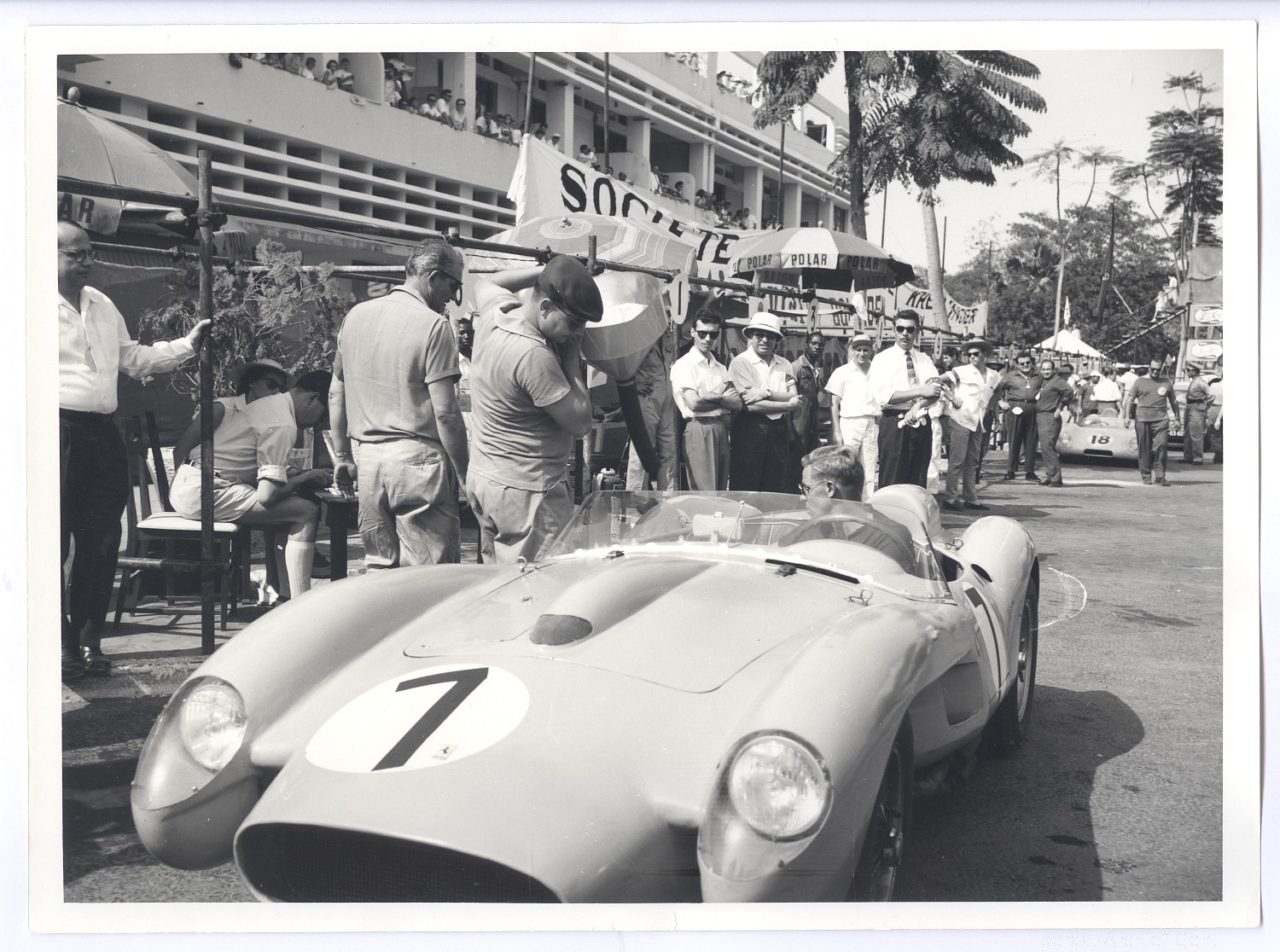
A name synonymous with speed and elegance, the Ferrari 250 Testa Rossa was one of the most successful cars in Ferrari’s history. Debuted in 1957, it boasted a powerful V12 engine and was known for its distinctive red cam covers (hence the name ‘Testa Rossa’, meaning ‘red head’ in Italian). It achieved numerous victories, including a hat-trick at the 24 Hours of Le Mans.
Interesting Facts:
- The 250 Testa Rossa was one of the most successful Ferrari racing cars in its era.
- It won the 24 Hours of Le Mans three times in the late 1950s and early 1960s.
- Its name, which means “red head” in Italian, comes from the red-painted valve covers of its engine.
- The car was powered by a V12 engine with various displacements, the most common being 3.0 liters.
- Its distinctive bodywork was designed by Scaglietti and is considered a classic example of 1950s race car design.
10. Jaguar D-Type

The Jaguar D-Type was a technological marvel of its time, famous for its innovative monocoque construction and aerodynamic efficiency. Produced from 1954 to 1957, it won the Le Mans 24-hour race three times, in 1955, 1956, and 1957. Its design was so advanced that it influenced sports car designs for many years to come.
Interesting Facts:
- The D-Type was produced by Jaguar Cars Ltd. between 1954 and 1957.
- It won the Le Mans 24-hour race three times, in 1955, 1956, and 1957.
- Its aerodynamic design was heavily influenced by aviation technology, with a distinctive vertical stabilizer.
- The car was powered by a 3.4-liter XK inline-six engine.
- Its monocoque construction was innovative for the time, contributing to its success on the track.
11. Maserati 250F
Regarded as one of the most beautiful F1 cars ever made, the Maserati 250F was raced by some of the greatest drivers of the era, including Fangio and Stirling Moss. Its debut in 1954 saw immediate success, and its front-engine design was a staple in Formula One until the advent of mid-engine cars.
Interesting Facts:
- The 250F was used by Maserati in Formula One racing between 1954 and 1960.
- It was driven by several legendary drivers, including Juan Manuel Fangio.
- The car won its first race at the 1954 Argentine Grand Prix in the hands of Fangio.
- It had a lightweight tubular frame and was powered by a 2.5-liter straight-six engine.
- The 250F is remembered as one of the most beautiful Formula One cars ever made.
12. Lancia D50

The Lancia D50 entered Formula One in 1954 and was notable for its innovative design, featuring side-mounted fuel tanks for improved weight distribution. Though its time in F1 was brief, it left a lasting impact, especially after its acquisition by Ferrari.
Interesting Facts:
- The D50 was introduced in Formula One in 1954.
- Its most distinctive feature was the side-mounted fuel tanks for better weight distribution.
- The car was driven by legendary drivers like Alberto Ascari and Juan Manuel Fangio.
- After Lancia withdrew from racing, the D50s were transferred to Ferrari and continued to be successful.
- The D50 was known for its innovative engineering, although it had a relatively short life in F1.
13. Porsche 550 Spyder
A car that became famous both on and off the racetrack, the Porsche 550 Spyder was a highly successful sports car in the mid-1950s. Known for its lightweight design and superior handling, it made a name for itself in various international racing events.
Interesting Facts:
- Introduced in 1953, the 550 Spyder was Porsche’s first purpose-built race car.
- It gained fame for its successes in endurance racing, including class wins at Le Mans.
- The car was lightweight, with a body made of aluminum, and featured a mid-engine layout.
- It was powered by a 1.5-liter flat-four engine, which was unusual at the time.
- The 550 Spyder is famously associated with actor James Dean, who owned one and tragically died in a car accident while driving it.
14. Lotus Mark IX
The Lotus Mark IX was an important milestone in the evolution of Lotus as a prominent racing car manufacturer in the 1950s. Introduced in 1955, the Mark IX was a testament to Colin Chapman’s innovative approach to car design, focusing on lightweight construction and agility over brute power.
Interesting Facts
- True to Lotus’s philosophy, the Mark IX was incredibly light, contributing to its nimbleness and agility on the track.
- It often utilized a Coventry Climax engine, but the design allowed for flexibility in engine choice, catering to different racing requirements.
- The Mark IX competed in the 24 Hours of Le Mans, showcasing its endurance capabilities despite some mechanical challenges.
- The car featured a minimalist body design, which was not only lightweight but also aerodynamically efficient.
- The Mark IX laid the groundwork for future iconic models like the Lotus Eleven, signifying the beginning of Lotus’s dominance in sports car racing.
15. Cooper T51
The Cooper T51 is a significant car in Formula One history, marking a turning point in racing car design. Introduced in 1959 by the Cooper Car Company, it was one of the first Formula One cars to successfully employ a rear-engine layout, a feature that would become standard in the sport.
Interesting Facts:
- The Cooper T51 was among the first to move the engine to the rear, a design that improved weight distribution and handling.
- In 1959, Jack Brabham drove the T51 to win the Formula One World Drivers’ Championship, a first for a rear-engine car.
- Its innovative design set a new standard in Formula One, influencing the future direction of racing car engineering.
- The T51 notched up several Grand Prix victories, proving the effectiveness of its design.
- It was also competitive in Formula Two races, showcasing its versatility across different racing categories.
16. Vanwall VW5
The Vanwall VW5 was a British Formula One car that played a pivotal role in the late 1950s, breaking the dominance of Italian teams in the sport.
Interesting Facts:
- The VW5 was instrumental in ending the era of Italian dominance in Formula One, particularly that of Ferrari and Maserati.
- Vanwall won the first-ever Constructors’ Championship in 1958 with the VW5.
- It was a product of British engineering prowess, with notable contributions from Colin Chapman and Frank Costin.
- The VW5 was known for its aerodynamic efficiency, a key factor in its success.
- Driven by legendary drivers like Stirling Moss and Tony Brooks, the VW5 secured numerous victories in Formula One.
17. Maserati 300S
The Maserati 300S was a racing car produced by Maserati of Italy in the late 1950s, known for its exceptional design and performance.
Interesting Facts:
- The car was powered by a 3.0-liter straight-six engine, noted for its strong performance.
- The 300S achieved significant success in sports car racing, competing against other top models of the era.
- It featured a classic Italian sports car design, with a long hood and sleek lines.
- Many renowned drivers preferred the 300S for its balance and handling characteristics.
- Only around 26 units of the 300S were produced, making it a rare and sought-after collector’s car.
18. Talbot-Lago T26C
The Talbot-Lago T26C, produced in the late 1940s, continued to be a competitive racing car in the early 1950s, showcasing the enduring quality of its design and engineering.
Interesting Facts:
- The T26C was successful in Grand Prix racing, including a notable win at the 1950 British Grand Prix.
- It was equipped with a robust 4.5-liter inline-six engine, one of the most powerful of its time.
- Besides Grand Prix racing, the T26C was also adapted for endurance racing.
- The car was one of the last to compete in Grand Prix racing before the formal establishment of Formula One.
- Each T26C was hand-built, reflecting the bespoke nature of racing cars in that era, emphasizing quality and craftsmanship.
Endnote
The 1950s gave the world amazing, superfast, and beautiful racing cars. The cars were manufactured with passion and inspiration, and the hype these cars create till today shows it all. The 1950s were also a defining decade for racing, marked by fierce competition, groundbreaking technological advancements, and cars that became legends in their own right. These vehicles were not just machines; they were embodiments of the passion, innovation, and the relentless pursuit of speed that characterized the era. They laid the foundations for modern racing and continue to inspire car enthusiasts and racers around the world. As we look back, these cars remind us of the rich history and the timeless allure of motorsports.

